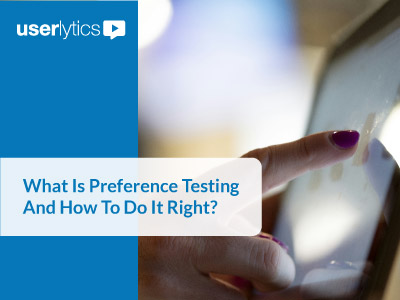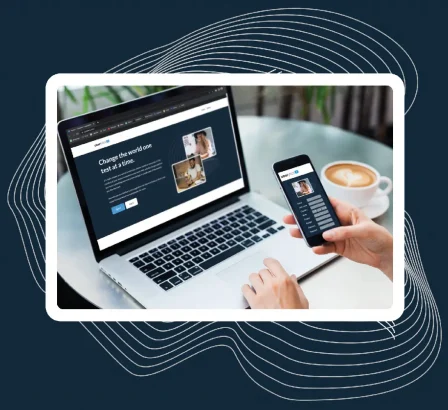
Understanding what democratizing user research means is not as simple as searching for the definition online, or asking a colleague for a quick summary. In a general sense, the universal definition is “providing all stakeholders with access to user insight and UX research tools.” This definition, however, fails to capture the much deeper components that seem to leave many UX practitioners divided in their opinions about the topic.
Those who support this movement believe that democratizing research can welcome new talent into the industry, allow UX Research practitioners to scale their impact across the organization, and enrich the experience of end users. Yet, those who are hesitant point out that UX research is a science that requires prowess, experience and a certain level of rigor. Certainly, there is no black and white answer to which side is correct. Rather, there are shades of gray that bring together both the opportunities and challenges of democratizing user research.
In efforts to shed light on all perspectives, this article seeks to give a lay of the land of UX research, assessing the meanings, the risks, the opportunities, and the responsibilities that encapsulate the ever-growing realm that is democratized UX research.
What Does It Mean To Truly Democratize Research?

Definition of Democratized Research
If we take a second to think about the definition of democratized research, it truly represents the core of what “democratized” actually means – giving the people (stakeholders, teams, organizations) the freedom and access to perform research as they see fit. When we democratize research, we are enabling others to understand their users in the form of usability, ease of use, and user-centric experiences. The essential outcome of these freedoms is to provide businesses with the ability to immerse themselves in the perspectives of their users, whether their team consists of UX researchers or not.
Examples of Democratized User Research
An example of what this could look like would involve having a few members from a marketing, finance or design team actually participate in either executing or observing a UX research test. This level of accessibility then allows these team members to perhaps make quick iterations or adjustments to their product or their outreach messaging, all while becoming more connected to their true end customer. Looking from a more granular perspective, it is clear that in recent years, advanced remote user experience testing has made frequent iterative user experience research simple and inexpensive, and thus empowered an “Agile UX” integration of user research within the design and dev-op sprint process.
If you are a business that is offering this level of accessibility to research, you are providing teams with the proper tools and channels to make the research process as simple as possible. If you are an organization undertaking a research process, you are not only demonstrating a prioritization of UX research, You are also (hopefully) engaging in a barrier free process to accessing the data and human insight that can help drive your brand forward.
Implications of Democratized User Research
At first glance, this sounds ideal for both parties – but is it? The key questions now being asked are as follows: 1. Do we limit the use of these user experience testing platforms and associated respondent panels to User Research department(s), regardless of whether they are embedded within Product, or Design? 2. Or, do we completely open up usage to a myriad of businesses, practitioners and organizational departments to help them benefit from user perspectives, quite literally allowing them to see through their users lenses as they engage with their digital assets?
The Divide in the Industry

Both sides of these aforementioned questions involve a risk. The risk of stunting the dissemination and benefits of UX research, versus the risk of degrading the reputation of user research. There are likely to be more than two opinion groups on whether or not the democratization of UX research is a good thing (ie. those in the gray area). Though at this time, it is clear that one opinion group is preparing for the change that has occurred as research accessibility has increased, and one group is aiming to control and manage the democratization of UX research in an effort to protect the integrity of the UX research industry. As is the case with any massive change, UX professionals are debating whether the benefits outweigh the inherent risks, which calls for an understanding of both sides of this debate.
Some benefits of democratizing user research
- Instant feedback, in real time, for quick decision making, shared across multiple potential beneficiaries.
- Helps transform organizations into true user centered entities.
- Sheds light on the value and the challenges of UX research.
- Encourages data-led decision making and method-focused planning .
- Invites opportunity to gain global perspective, thus aiding in localization of products.
- Allows organizations to collect a greater volume of data about their users.
- Without the barriers of formal training or specialized equipment, many more people are likely and willing to try conducting user research themselves.
Some drawbacks of democratizing user research
- Potential ethics issues, as non-professional researchers may not be aware of the legal practices and privacy requirements to conduct research .
- Biases, which may be visible in the way of asking leading questions, or choosing to conduct research with only specific customer segments (e.g. highest grossing clients).
- Identifying and diagnosing the wrong usability or user experience issues, which can cause misdirection for product development.
This does not capture the full extent of the industry’s perspectives. But the general takeaway that must be considered is as follows. How do we find a suitable gray area that offers UX research scaling without negatively impacting the field? This gray area would require those who champion the democratization of user research to provide substantial levels of support, education, and tools as a means of minimizing the risks. Meanwhile, those who take on the research themselves must maintain a willingness to learn. It is equally important for those who teach to plan for self-made errors, remembering that mistakes are a necessary element of the learning curve. Either way, both parties have a mass responsibility here, because whether we planned on it or not, democratized research is here!
Userlytics’ Stance on the Democratization of User Research

Userlytics’ stance on the democratization of user research is somewhere in the middle. Democratizing user research allows for a massive scaling of the impact of user experience research. This helps organizations become more user centered. However, careful data management, guidance from professional UX researchers, and quality control is important to ensure the new beneficiaries of user research are achieving their goals. As researchers who own this domain, our responsibility is to mentor non-UX researchers and enable them to learn how to get the UX insights that they want. And, as one of the leaders that created the remote user experience research industry, we have always worked hard to eliminate barriers to the widespread adoption of user centric practices across organizations.
How does Userlytics Democratize User Research?

Platform features and capabilities
Userlytics facilitates the democratization of user research in several ways. For one, our clients are key stakeholders and highly involved in conducting UX studies. Secondly, we offer unlimited accounts and seats for launching and analyzing studies at no additional cost. This allows unlimited departments and users to create or watch sessions and gain quality UX insights at no extra cost. Setting up a study is made simple with pre-set questions that represent industry-standard tasks. This can help remove some of the biases that could exist as new practitioners draft their own questions. Results from these questions are auto populated into metrics, also reducing the risk of misinterpreting some key insights. In addition, clients can instantly access a massive global proprietary panel of participants, eliminating the pain point of recruiting participants. Our platform also allows up to 25 invisible observers to view studies as they are taking place. This allows them to provide optional direction and insight for the moderator to consider in real time.
Easily accessible “one-stop-shop” for UX testing needs
Userlytics enables organizations and businesses of all sizes conduct effective user research. We offer an all-in-one-solution for conducting affordable, remote user research and gathering actionable insights to improve the user and customer experience. Our global panel of more than 1.5 million participants is spread across over 150 countries. This allows virtually any type of customer to be targeted for a user experience study. The accessibility of our platform creates a friendly environment for organizations to begin learning and practicing conducting user research.
UX Consulting and account management
Our UX Consulting team and dedicated account managers act as support and guidance for anyone using our platform. This includes those who are new to the world of user research, or would simply like some specialty guidance and services. We develop scripts, create detailed study reports, and offer our expert opinions to ensure reliable, valid approaches to UX research. From an educational standpoint, our UX Consulting department not only provides end-to-end services, but also offers shadow sessions, providing real time feedback to new practitioners as they host their first initial studies – also in several different languages!
In Conclusion

Democratizing user research makes it more accessible to everyone. We are opening up the door for scaling user experience research and design across the organization. There are some challenges that come with this newfound power. But fortunately, Userlytics has several features in place that make it easy for anyone to conduct user research without sacrificing quality or data integrity.
If you want to learn more about our all-in-one user research tool, book a free demo with us today!
Interested in UX Testing?
Data Visualizations
About the Author: Nicholas Aramouni

Nicholas Aramouni is a Senior UX Researcher and Communications Manager who has developed his qualitative and quantitative knowledge by working within a variety of industries, including music entertainment, media, technology and education. Across his career, Nick has conducted numerous international studies in countries all around the globe, placing importance on developing international partnerships as a means of better understanding the various cultures and markets that push UX researchers further. Nicholas has enhanced his involvement in UX by also working as a marketing content strategist and speaker in the field. He has proudly completed a B.A in Policy Studies, a minor in Business Innovation and a B.A in Education.
Read More Articles by Nicholas



